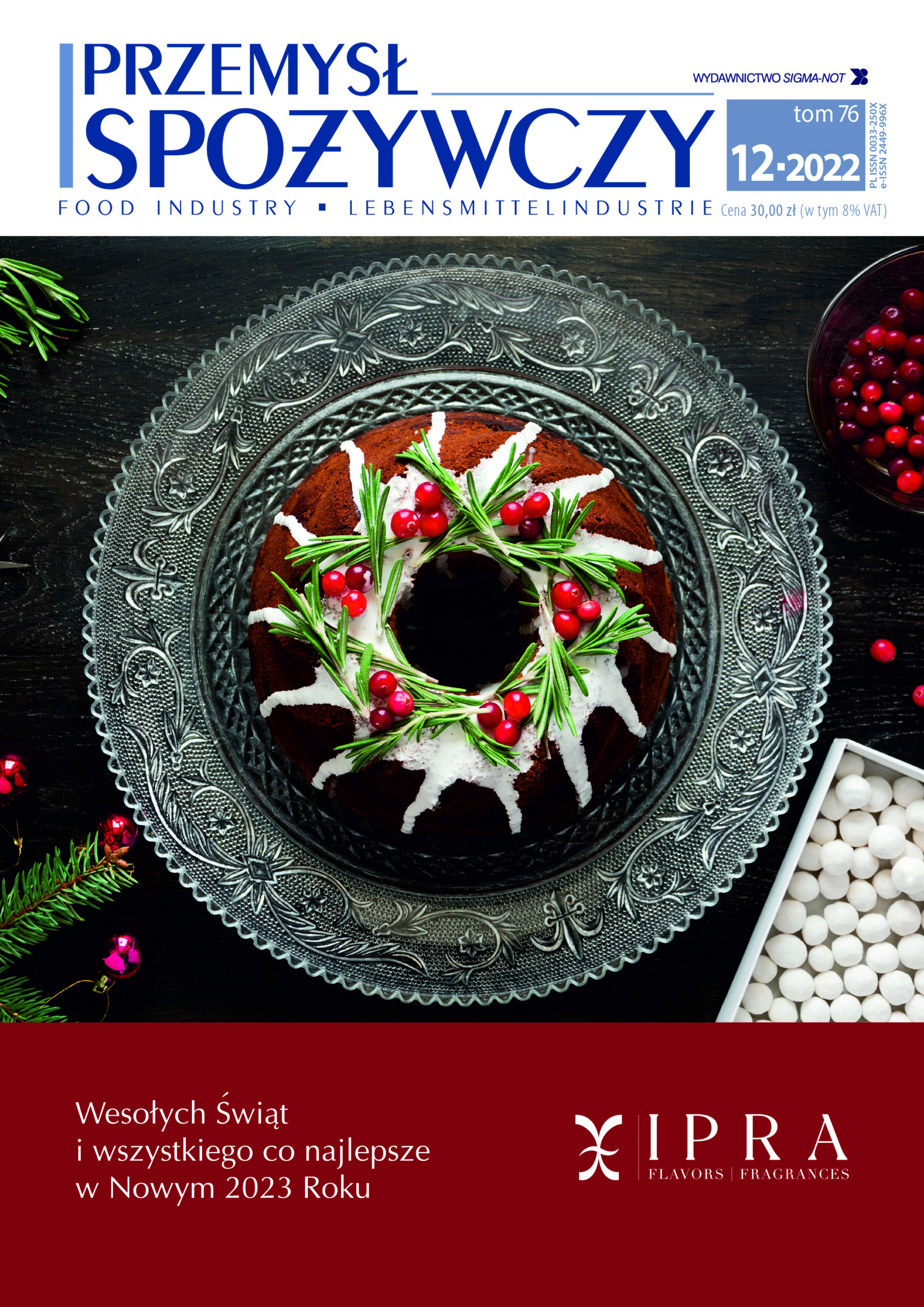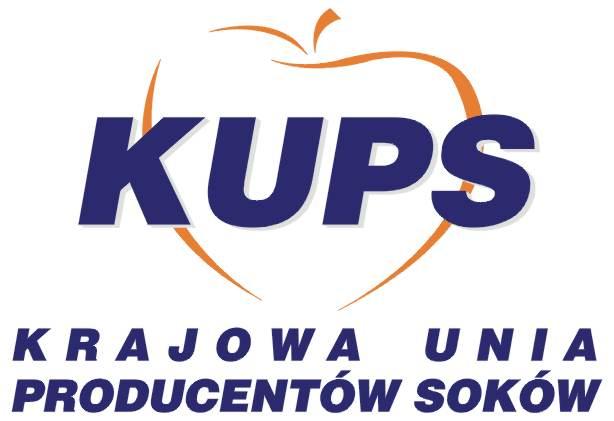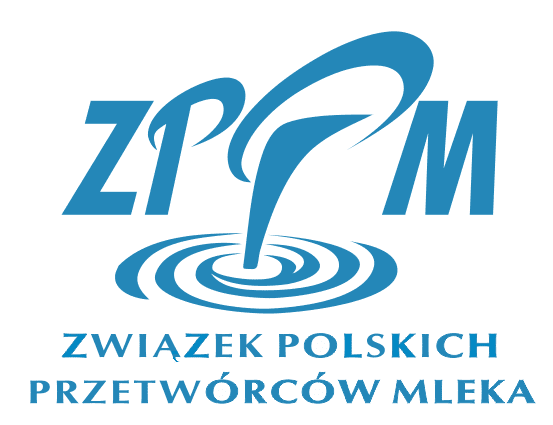ECONOMY
- Importance Of the Food Industry in The Economy of Poland and The European Union (DOI10.15199/65.2022.12.1)
Iwona Szczepaniak, Łukasz Ambroziak, Małgorzata Bułkowska, Jadwiga Drożdż 5
In recent years, the food industry in Poland has been developing in dynamically changing external conditions. However, enterprises skilfully adapted to functioning in difficult conditions, which allowed them to achieve good production, financial and commercial results, as well as maintain relatively good investment activity. At the same time, the food industry occupied an important place in the national economy, both on the domestic labour market and making a relatively large contribution to the production of global production and gross domestic product (GDP). The positive trade balance of food industry products had a positive impact on the national trade balance. Also, Polish food producers and exporters have continuously occupied an important place on the European Union (EU) market. The crisis on the market of energy and agricultural raw materials, which producers are currently experiencing, may result in a weakening of the dynamics of the sector’s development and difficulties in maintaining its high position in the economy.
KEY WORDS: food industry, national economy, foreign trade, Poland, European Union
TECHNICS-TECHNOLOGY
- Protein-Polysaccharide Hydrogels as Delivery Systems for Bioactive Substances – Using Curcumin as An Example (DOI10.15199/65.2022.12.2)
Adonis Hilal, Anna Florowska, Małgorzata Wroniak 13
Fortifying food systems with bioactive ingredients (so-called nutraceuticals such as carotenoids, polyphenols, etc.), many of which are oil-soluble, is becoming increasingly popular. These are the most challenging ingredients to incorporate because they are difficult to integrate into food systems with high water content and frequently exhibit low bioavailability when consumed. Curcumin, the bioactive ingredient found in turmeric, is one such ingredient. Curcumin has both preventative and therapeutic properties in the treatment of a variety of diseases. Protein-polysaccharide hydrogels have a lot of potential for developing new health-promoting plant-based foods because of their properties. These hydrogels can be used to modulate the sensory features of food systems (texture, appearance, etc.). In addition, they can act as a carrier for the oil phase containing a bioactive substance (emulsion-filled hydrogel). This solution allows for the fortification of foods with hydrophobic compounds, which have previously been challenging to incorporate into water matrices.
KEY WORDS: fortification; bioactive substances; plant-based food; functional food
- Use Of Cell Cultures for Alternative Meat Production (DOI10.15199/65.2022.12.3)
Patrycja Biernacka, Grzegorz Tokarczyk 17
Meat is one of the richest sources of protein in the human diet. For many years, there has been a continuous increase in the demand for meat and meat products. As the demand for meat increases, there are also growing concerns about whether it will be possible to meet the demand for it through conventional livestock farming. Thus, there is growing interest in alternative methods of producing „artificial meat”, including in vitro cultivation from stem cells. As a relatively new technology, it raises many concerns regarding its safety, environmental impact and consumer acceptability.
KEY WORDS: mięso in vitro, alternatywna produkcja, komórki macierzyste, bezpieczeństwo żywności
- Chemical Contaminants in Rapeseed Oils from The Polish Market (DOI10.15199/65.2022.12.4)
Małgorzata Wroniak, Karol Łysiak, Katarzyna Ratusz 21
The manuscript describes potential sources of chemical contamination in edible oils. The contaminations found in refined and cold-pressed oils and their sources were compared. Contaminants from the technological process of obtaining refined oils, as well as from the environment, during transport, or from the packaging, were taken into consideration. Monochloropropanediol esters, glycidol esters and mineral oils have recently received the most attention in foreign literature and legislation. Moreover, their levels are being monitored, not only in highly processed food, but also in food containing fats and in pure oils. Based on the analysis of rapeseed oils from the Polish market, it was found that non of the analyzed oils contained toxic metals, mycotoxins, dioxins and dioxin-like compounds, phthalates, or PAHs. However, very low levels of 3-MCPD esters and glycidol esters were discovered in refined oils and saturated mineral oils (MOSH) in both pressed and refined oils. No presence of aromatic mineral oils was not detected in the tested oils(above the detection level of the method).
KEY WORDS: chemical contaminants, rapeseed oils, cold-pressed oils, refined oils
FOOD-FEEDING
- Vegan ice cream: A review (DOI10.15199/65.2022.12.5)
Anna Kot, Anna Kamińska-Dwórznicka 28
There are a plethora of reasons why people are more interested in a vegan diet and at the same in a vegan frozen dessert. Environmental, ethical, and healthy motives or just even curiosity contribute to developing the need for such products. The main purpose of this study was to develop and understand of the phenomenon of vegan ice cream. Another key point in this paper was to assemble basic information about vegan ice cream, its ingredients, experimental production and the newest research in the scientific world. All the mentioned examples show that there are many great alternatives to milk ingredients and a wide variety of compounds. In addition, the combination of distinctive compounds has contributed to a comprehensive range of possibilities in vegan ice cream production.
KEY WORDS: lody wegańskie, weganizm, lody, składniki do lodów
- Analysis Of Consumers’ Opinions on Veal Meat (DOI10.15199/65.2022.12.6)
Karina Stanaszek, Tomasz Florowski, Anna Florowska 33
The term „veal” is understood as meat obtained from the cutting of veal carcasses. The young age of the calves at the time of slaughter is a factor determining the specific characteristics of the meat obtained valued by consumers, such as low fat content, light colour, tenderness and delicate taste. Based on the survey, it was found that the majority of respondents declared that they buy veal, mainly because of its sensory characteristics. However, the largest group of respondents indicated that they buy veal occasionally (less than once a month), which may be the result of its relatively high price and low availability. The largest group of respondents declared that they often buy sirloin and round of veal. The preferred form of purchase of veal was meat in a larger piece. The vast majority of respondents indicated that the veal meat available on the market is of good quality.
KEY WORDS: veal meat, consumers preferences, questionnaire survey
LOGISTIC-PACKAGING
- Quality Control of Packaging (DOI10.15199/65.2022.12.7)
Marta Lenartowicz-Klik, Izabela Gajlewicz 39
Currently, about 98% of all types of products offered on the market require packaging. Both in the case of materials and articles that are ultimately intended to come into contact with food, including all types of packaging and packaging materials, it is the manufacturer’s duty and responsibility to comply with the relevant provisions on testing packaging intended for contact with food . The article discusses some of the most important things that should be taken into account during packaging quality control, including the requirements that are determined by EU Regulations, National Regulations, Directives and international norms and standards. This publication also presents packaging quality control processes in the food industry on the example of plastic, glass, metal and paper packaging.
KEY WORDS: quality control, glass packaging, plastic packaging, paper packaging, metal packaging, food contact packaging.
EVENTS
- Consumers rely on glass packaging – survey results 44




